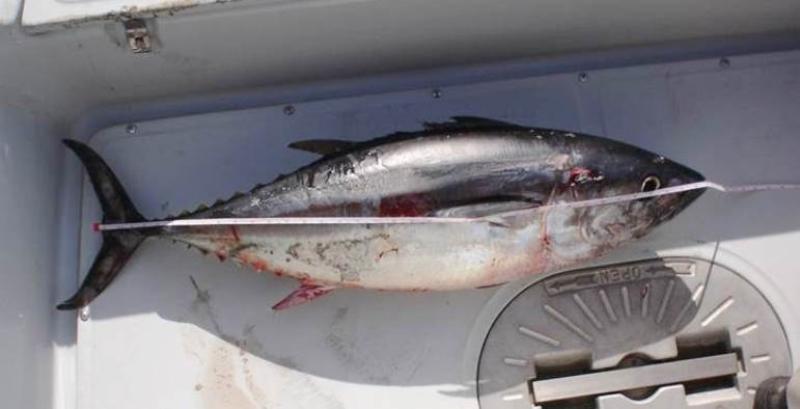Atlantic bluefin tuna are beginning to appear off the coasts of North Carolina and Virginia. The early arrival of the highly sought-after finfish may be generating an enthusiastic stir among fishermen, but the NOAA Office of Law Enforcement interest is in ensuring compliance throughout the season.
“Bluefin tuna fisheries are among the most highly regulated in the world” said OLE Enforcement Officer Justin Hanacek. “In order to safeguard the species’ stability it’s important to comply with all the regulations intended to protect and manage the population throughout all stages of the migration along the Atlantic and Gulf coasts of the United States.”
With that in mind, OLE personnel alongside partnering enforcement agencies in the Greater Atlantic Region will be conducting targeted compliance efforts. Officers will be patrolling the docks and waters, as well as inspecting offloads and logbooks.
Officers will also be checking permit compliance. Since the bluefin tuna is a highly migratory species, all owners/operators of vessels are required to obtain, inspect, sign, and carry onboard a specific Atlantic tunas or HMS vessel permit to fish. Atlantic tunas permits are issued in five commercial categories and HMS permits are issued in two categories. Only one permit category may be assigned to a vessel per year.
The type of permit obtained determines the rules, the gear, and reporting guidelines that apply to that vessel. For example, the number and size of fish that can be retained, how those fish need to be reported, and the U.S. Coast Guard safety gear required. Other regulations include that Atlantic tunas may be sold only by fishermen permitted in commercial categories and then can only be sold to permitted dealers, conversely Atlantic tunas taken aboard angling category vessels may not be sold and are for personal use only.
“Since the quota has been increased along the Atlantic Coast, we have a focused approach to ensure that there’s a fair and balanced playing field for recreational and commercial fishermen alike,” said Special Agent Tim Donovan, the acting assistant director for the Northeast Division of OLE.
The increase came as a result of a November 2014 International Commission for the Conservation of Atlantic Tunas (ICCAT) meeting.
“The bluefin tuna quota was increased 135 metric tons,” said Hanacek, adding that the overall quota is 1,059 metric tons. For General permit vessels, “there’s a three fish per vessel, per day catch limit. But, this is subject to change, depending on reported landings.”
Bluefin tuna permits may be obtained online through the NOAA Fisheries permit office. In addition to regulations found under Code of the Federal Register, Title 50, section 635.23, in-season fishery notices (retention limit adjustments, closures, etc.) may be found online at the permit shop - news page or by calling the Atlantic Tunas Information Line at (978) 281-9260.
Find compliance assistance information or your local OLE office



